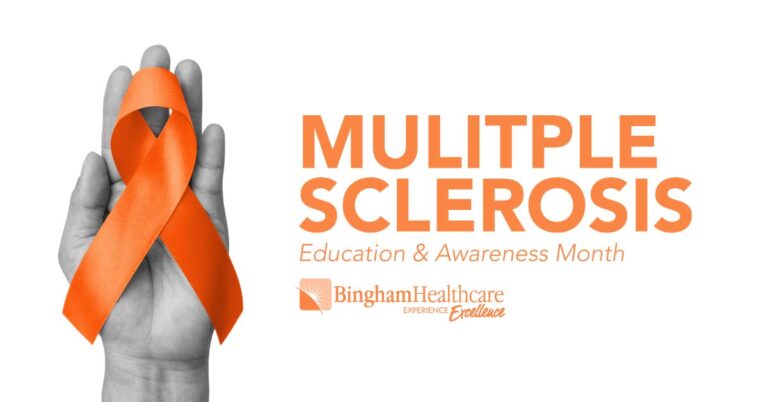
Robot-Assisted Partial Knee Resurfacing
As the body’s largest joint, the knee plays a crucial role in helping you accomplish almost all of your everyday tasks. Over time, though, natural wear and tear can result in several different forms of knee pain. Many people experience severe knee pain or stiffness that limits their everyday activities. They may also find it hard to walk more than a short distance without significant pain.
David J. Peterson, DO, orthopedic knee and hip replacement surgeon at Bingham Healthcare Orthopedics, offers an effective and minimally invasive solution to help patients find relief from knee pain: robot-assisted partial knee resurfacing surgery.
Many surgeons are hesitant to perform partial knee replacements because of how difficult it is to achieve the required accuracy, but, not for Dr. Peterson, because he uses the Mako robotic-arm assisted system. He was the first surgeon in Eastern Idaho trained on the Mako system, and has used it to perform hundreds of knee procedures, making partial knee resurfacing surgery an incredibly effective option. And it’s only available at Bingham Memorial Hospital in Blackfoot, ID.
What is a robot-assisted partial knee resurfacing?
A robot-assisted partial knee resurfacing is a surgical procedure that helps relieve arthritis in one or two of the three compartments of the knee, using the Mako system. With a partial knee resurfacing, only the damaged area of the knee joint is resurfaced, which helps to minimize trauma to healthy bone and tissue, allowing for faster recovery times.
Research has shown the Mako system to be the most accurate, most reproducible, and safest way to perform partial knee replacement surgeries. “Mako robotic-arm assisted hip and knee surgery has been a game-changer, dramatically changing the way joint replacement procedures are performed, by providing each patient with a personalized surgical experience based on their specific diagnosis and anatomy,” Dr. Peterson says.
Partial knee replacements are becoming more common amongst younger, more active patients struggling with knee pain, and, particularly weekend warriors under the age of 60.
Benefits of having a partial knee resurfacing
- Shorter hospital stay. Most patients go home the same day.
- Healing time is faster. Most patients are back to activities within a few weeks.
- Minimally invasive, which means smaller incisions, less pain, and fewer complications.
- Feels more natural. No ligaments or muscles are cut.
- Extends the life of the natural knee.
- Lower cost.
- Only the affected part of the knee joint surface is removed.
Before surgery. It all begins with a CT scan of the knee joint that is used to generate a 3D virtual model of a patient’s unique anatomy. This virtual model is loaded into the Mako system and is used to create a patient’s personalized pre-operative plan. This helps to provide more accurate placement and alignment of an implant.
During surgery. Dr. Peterson can validate that plan and make any necessary adjustments while guiding the robotic-arm to execute the procedure exactly as planned. Every surgery is customized to the meet the needs of that patient.
After surgery. Dr. Peterson, nurses, and physical therapists will set goals with patients to get you back on the move. They will closely monitor your condition and progress and may review a post-operative X-ray of your new knee with you. “Having a partial knee replacement once meant patients had to stay in the hospital for several days,” says Dr. Peterson. “After the surgery, most patients can go directly home to recover.”
“It’s exciting to be able to offer robot-assisted partial knee resurfacing surgery using the Mako system,” says Dr. Peterson. “It’s less daunting for patients, and I have seen first-hand many times how dramatically this surgery can improve someone’s quality of life.”
Are you experiencing any of the following?
- Moderate or severe knee pain.
- Chronic knee inflammation and swelling that does not improve with rest or medications.
- Knee deformity—a bowing in or out of your knee.
- Failure to substantially improve with other treatments, such as cortisone injections, hot/cold therapy, knee braces, lubricating injections, physical therapy, or walking aids.
If you answered yes to any of the previous, you may want to consider a consultation with Dr. Peterson. In fact, you may be a candidate for a mini-incision partial knee resurfacing.
Suffering from persistent knee or hip arthritis pain? As a leading orthopedic surgeon in Eastern Idaho, Dr. David J. Peterson at Bingham Healthcare Orthopedics specializes in robotic-assisted, minimally invasive joint replacement for the knee and hip. He is board certified in orthopedics and fellowship trained in knee and hip replacement.
In 2017, Dr. Peterson was the first surgeon to perform total knee replacement in the state of Idaho using the Mako system. Since that time, he has performed hundreds of knee and hip procedures using this robotic technology, more than any surgeon in the Intermountain West region. In addition to Idaho, his patients have come from throughout the Intermountain West and beyond, for this exciting technology.
He sees patients in Blackfoot, Idaho Falls, and Pocatello. If you have questions about your knee health, or are ready to find relief from constant knee pain, call (208) 785-2229 to schedule an appointment.
Our content is reviewed regularly and is updated when new and relevant evidence is made available. This information is neither intended nor implied to be a substitute for professional medical advice. Always seek the advice of your physician or other qualified health provider prior to starting any new treatment or with questions regarding a medical condition.
Return to Articles


